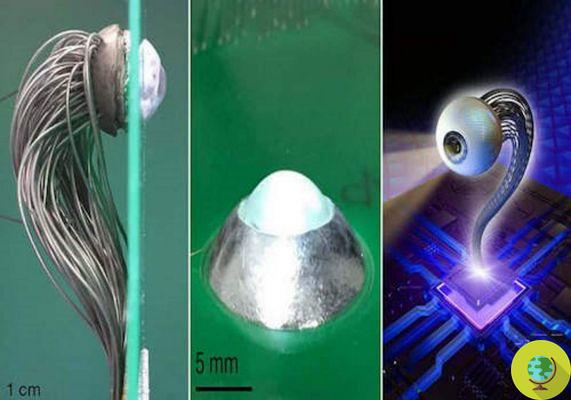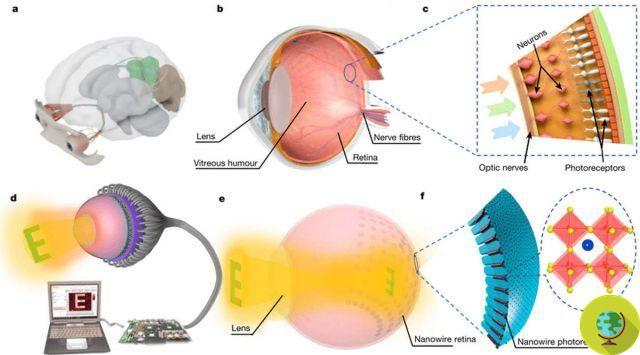Robotic engineers have developed a prototype bionic eye that could restore the sight of some 285 million blind people.
Don't store avocado like this: it's dangerousAn artificial eye that is almost as sensitive and functional as the human one: a team of robotic engineers has been able to develop a prototype of a bionic eye that could restore the sight of about 285 million blind people.
It is a real visual prosthesis developed by the engineers of the Hong Kong University of Science and Technology who, in an article published in Nature, explain how the EC-EYE, short for ElectroChemical EYE (which, they hypothesize, could be available in 5 years), is entirely inspired by the human retina, one of the most sensitive tissues we possess, providing up to 80% of all information about our surroundings.
The bionic eye mimics the dome shape of the human retina that refines focus and reduces light scatter as it passes through ten million photoreceptive cells per square centimeter, all natural features hitherto impossible to replicate with artificial materials.
How the bionic eye works
It was gods that were developed photoreceptors high density placed within the pores of aluminum oxide, a mineral almost as hard as diamonds that would work to mimic the retina.

©Nature

©Nature
Specifically, researchers led by Zhiyong Fan designed a nanoscale model of an artificial eye using an aluminum oxide hemispherical retina in which light-sensitive nanowires made of perovskite, a mineral, which mimic photoreceptors were placed. human eye. They then developed strands of liquid metal similar to nerve fibers that connect human eyes to the brain and then transmit signals from photoreceptors (the perovskite nanowires) to external circuits to process them.
From the experiments it was observed that the structural similarity with a real eye has endowed the bionic eye with a wide field of view of 100 degrees (for comparison, the field of view of both human eyes is 130-135º vertically).
"The similarity of the structure of the artificial eye is certainly impressive, but what really sets it apart from previous devices is that many of its sensory capabilities are comparable to those of a natural eye," explains Hongrui Jiang, biomedical engineer at the University of Wisconsin. For example, the artificial retina can detect a wide range of light intensities, from 0,3 microwatts to 50 milliwatts per square centimeter. At the lowest measured intensity, each nanowire in the artificial retina detected an average of 86 photons per second, on par with photoreceptors in human retinas. This extraordinary sensitivity derives from the perovskite material of which the nanowires are composed ”.
For now, the artificial eye is a low-resolution prototype made up of 100 pixels, but researchers believe that in the future it will be able to fully mimic the abilities of a human eye, if not even better.
Source: Nature
Read also:
- Eye problems: 20 causes and symptoms not to be underestimated
- Sagging eyelids: natural remedies and facial gymnastics exercises (VIDEO)
- Chalazion: causes, cures and remedies for adults and children


























